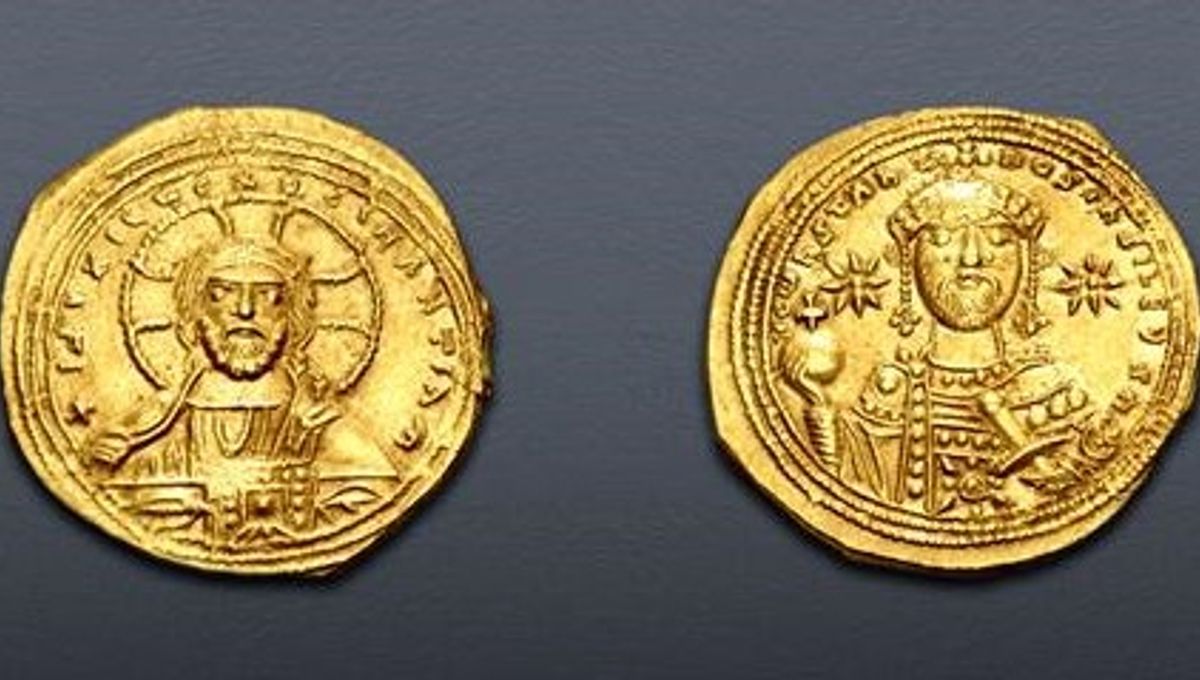
Supernova SN 1054 must have been truly a spectacle. It was visible in the sky for almost two years, including during the day, at first. It’s one of only eight known supernovae in the Milky Way where written testimony has been discovered in the historical record, and now scientists believe they have found a reference to it hidden on a coin.
The supernova first appeared on July 4, 1054 CE, and shined visibly for 23 days and 653 nights. It would be “discovered” and cataloged multiple times hundreds of years later but at the time, it was documented by Chinese, Japanese, and Islamic astronomers. There is a curious lack of mention in any Byzantine records, however, though undoubtedly they would have been able to see it too.
In a paper in the European Journal of Science and Theology, researchers posit that an extra star on a coin dated to this period does actually show the supernova, perhaps a heretical move to include something astronomical when the Byzantine Empire was largely Christian.
The team looked at 36 coins minted during the reign of Constantine IX between 1042 and 1055 CE. Three of the coins show a single star next to the Emperor’s head, while the fourth one shows two. The second one, they believe, is a reference to the supernova. It could also be a reference to the Great Schism, the separation between the Roman Catholic and Eastern Orthodox Church.
So this is a story not of just scientific discovery but religious intrigue and political power.
We know the supernova today as the Crab Nebula, but back then it was referred to as a “guest star” (kè xīng 客星). The detailed description of this event comes from Chinese astronomy. There are discussions of it by Islamic Scholars. There are even possible references in a pictograph associated with the Ancestral Puebloan culture and in the oral tradition of the Aboriginal people of the region around Ooldea. But there is very little from Europe.
This has perplexed historians. The supernova of 1006, albeit brighter, was widely reported in texts. But not so much the one of 1054. One leading explanation is to do with the Great Schism; after all, the Patriarch of Constantinople, Michael I Cerularius, was excommunicated on July 16 when the supernova was at its brightest during the day.
It’s likely that the chaos that surrounded the Schism and the stance of the Church that argued that the heavens were immutable both played a major role in the lack of reports of the supernova in Europe. However, the paper argues that the coin is a not-so-subtle stand against the Catholic Church.
The team suggested that as Venus and SN 1054 were visible on opposite sides of the Sun in the summer of 1054 CE, the coin depicts the emperor as the Sun, the star in the East is Venus, representing the Orthodox Church, and in the West is SN 1054, representing the Catholic Church, bright for a while and now fading.
The coin is an unusual find and it’s an interesting hypothesis, but it is far from conclusive evidence that it depicts the supernova and it doesn’t explain why it was not documented elsewhere in Europe at the time.
[H/T: Livescience]
Source Link: Extra Star On Byzantine Coin Could Be "Heretical" Depiction Of A Supernova